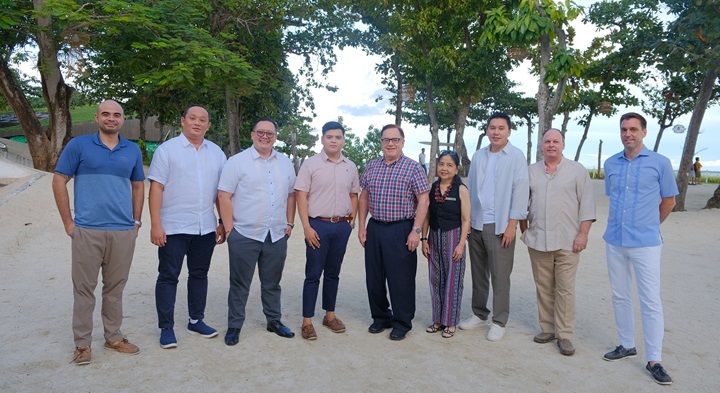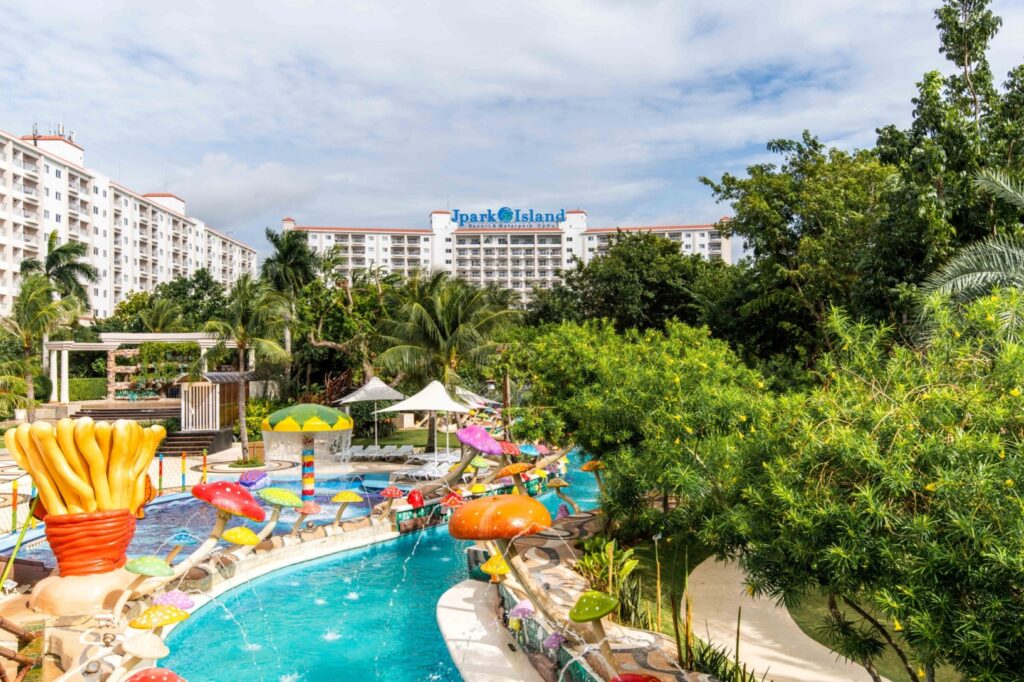
Two years since the wrath of the Philippines’ 2nd strongest typhoon, majority of Mactan hotel players report they are now down to the last stretch of efforts to achieve a 100% percent full recovery by the first quarter of 2024. Lapu-Lapu, home to at least 42 registered hotels and resorts, is working tirelessly in getting everyone ready to have all facilities running good as new in the following year.
In a recent dialogue organized by the Hotel Resort, and Restaurant Association of Cebu Inc. (HRRAC), general managers from the likes of Shangri-la, Plantation Bay, Jpark, Movenpick, Tambuli, Crimson, Blue Water Maribago, and Savoy Hotel Mactan, shares a moment together with the Lapu-Lapu Tourism Office as they recalled a few points to look back on and celebrate as they move forward to the coming year.
Survived to tell the tale, Didier Belmonte, General Manager of Crimson Mactan couldn’t help but recall how he felt when they were all under the mercy of the elements last December 16, 2021. He said, “it lasted for four hours, and it felt like a sure end and just when we thought it was over it came back”. In agreement, living to tell the story was a blessing but rebuilding through the wreckage was something else.

Ugarte, Maribago Blue Water, Simon Chew, Movenpick, Josef Chiongbian, Savoy Hotel Mactan, John
Kristoffer Rafols, Lapu Laput Tourism Office Representative, Bryan Connelly, JPark Island Resort and
Waterpark Cebu, Eya Shrimski, Tambuli Seaside Resorts and Spa, Brian Noel, Plantation Bay, Didier
Belmonte, Crimson Resort and Spa Cebu, Dave Junker, Shangri-La Mactan.
In history, the Department of Tourism Region 7 shares an estimate value of Php 2.5 billion worth of damaged tourism properties and establishments in Lapu-Lapu alone caused by Typhoon Odette as reported last January 2022.
With the unfortunate natural calamity happening at the height of the pandemic, what used to be a total of 1.8 Million travelers in Lapu-Lapu filling more than half of Cebu Province’s 3.3 Million guests in 2019 have been further reduced to a total of 313,408 guests in Lapu-Lapu with 541,376 visitors for the entire province by the end of 2022, according to the Lapu-Lapu Tourism Office.
With all else considered, tourism workers resulted to 15-day work cycle prioritizing relief contingency efforts while others endured through temporary loss of employment shares Brian Noel, General Manager of Plantation Bay.
LEARNING FROM THE WRECKAGE

When asked about what else the industry could have done better to mitigate losses and hasten typhoon relief coordination efforts, leaders shared important points to ponder on.
“Anticipation. Prevention. Response” reiterates John Kristoff Rafols representative from the Lapu-Lapu Tourism office. He shares “much of the effort transpires during the preparation stages the moment weather forecasts are announced. Response from the community is vital and collaboration between sectors will always be key”.
“Typhoon resilient communication systems” stressed Eya Shrimski GM of Tambuli. Going through the dreadful day herself, she recalls how communication and internet lines were all down and coordinating instructions became difficult. Helping them go through the plight was their trusty satellite two-way radios that allowed them to carry on. Dave Junker, GM of Shangri-La Mactan, shares “with the lines going down, it would be a beneficial investment to consider construction of underground power lines and communication distribution systems moving forward.”

“Green Sustainable Architectural Designs, when done right, proves to last longer” explains Didier Belmonte of Crimson. He adds “We’ve rebuilt our facilities differently by paying attention to the natural occurrence of the elements making it stronger and resilient to harsher conditions”. Shrimski of Tambuli also shares that “there should also be efforts on urban farming within resorts to serve as source of organic produce to augment food distribution choices when the time comes”.
“Centralized community relief efforts moderated by HRRAC will help manage resources better as we aim to help spread out to a wider network of people in need” said Josef Chiongbian, HRRAC Vice President for Resorts and General Manager of Savoy Hotel Mactan. He envisions “extending specialized resources provided by specific industry partners to avoid duplication of same efforts in order to maximize value and coverage”. He adds, there’s much to celebrate knowing that “resilience came in the form of individual relief operations addressing both short- and long-term concerns benefiting employees and communities within their reach”.
MACTAN, 100% READY FOR TOURISTS IN 2024

With the island’s 100% recovery already in the horizon, “We’re ready to compete and be seen as a separate alternative island destination in 2024” says Bryan Connelly, GM of JPark Island Resorts and Waterpark. He adds, the numbers to beat will be that of 2019.
Connelly, who also sits as HRRAC’s Member of the Board, shares that other than frequent individual travelers who enjoy leisure trips, we’re also cultivating the Meetings, Incentives, Conventions, Conferences, Exhibits, and Events market segment. Other than the winter-flyer market, we’d like to make sure business continues as we dedicate the island’s growing inventory for corporate functions, and brand activations.
On a similar route is Simon Chew, GM of Movenpick Mactan. He said, “we’ve already started developing our stream of guests coming from Malaysia, Singapore and neighboring countries. They do not only travel for leisure but initially for retreats and other related trainings.”
For the likes of Maribago Blue Waters, Domiku Ugarte, General Manager, is excited to celebrate theIR property’s 35th year anniversary and the unveiling of an additional 65 rooms along with new restaurants and facilities for guests to enjoy. They also aim to continue growing the Korean Market and the other Southeast Asian countries.
Currently, Mactan thrives with 60% of guests coming from local destinations or nearby cities in the Philippines. According to Brian Noel of Plantation Bay “crucial to our growth in 2024 will be the introduction of more flights especially from new destinations like India”. He adds “easing of travel restrictions such as VISA approvals from Japan and China will help encourage foreign nationals to include Cebu Philippines in their travel plans for the coming year.”

